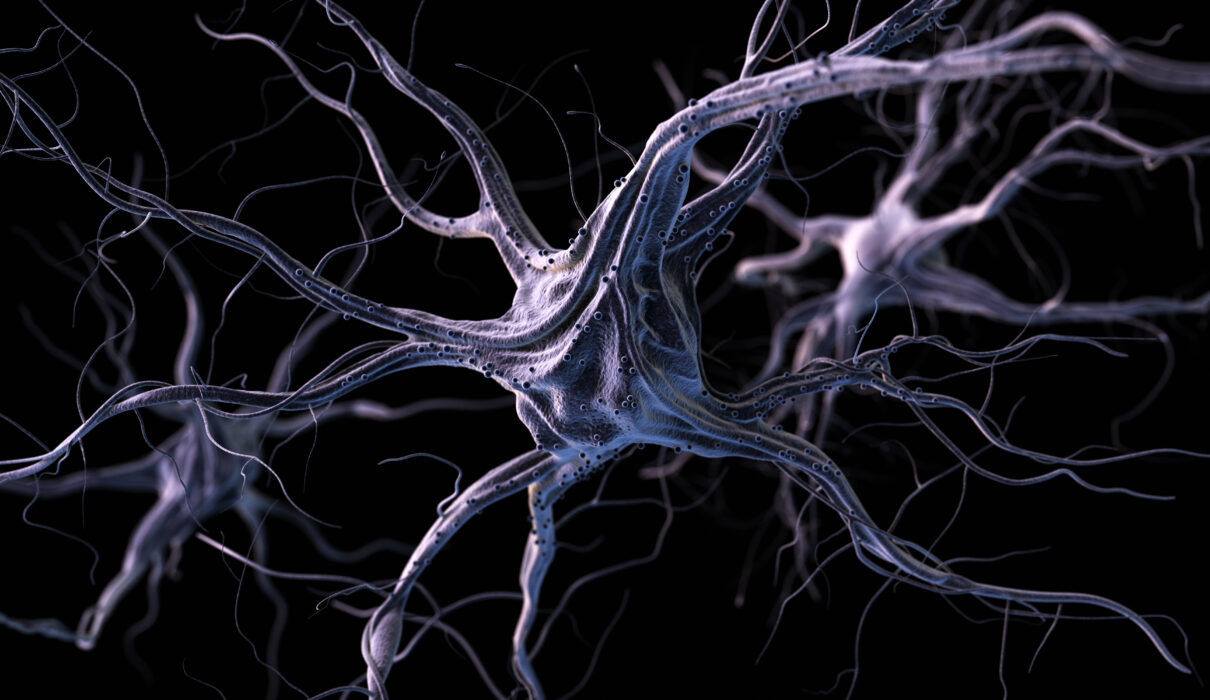The human brain is estimated to contain approximately 86 billion neurons. However, it loses around 10,000 of them every day. Learn more about these amazing cells.
Neurons are distributed throughout the nervous system, including the brain. They are the cells responsible for facilitating communication between different parts of the body, enabling the coordination of various functions.
Although it is not possible to establish the exact total number of these, it is clear that they are in the millions and millions. Exploring more about these brain elements allows us to delve deeper into the work they do in our body. Let’s get to it.
How many neurons does the human brain have?
Knowing how many neurons there are in the human brain is a challenge for scientists. The reasons? The complexity of the organ, individual variations and technical difficulties make measuring it accurately impossible.
While it was long estimated that there were around 100 billion of these nerve cells, renowned neuroscientist Suzana Herculano-Houzel participated in a study using a new counting method called isotropic fractionation. It suggests that the actual number of these cells is much lower than previously thought.
In line with this idea, Herculano-Houzel revealed in his book The Human Advantage (2016) that the human brain is home to around 86 billion neurons and, approximately, there is one glial cell for each one. Something important to note is that there are different types , with structural and functional differences.
As a side note, elephants have more neurons than us, tripling our total with an estimated 257 million. An ant, on the other hand, has around 250 thousand.
How does the amount vary depending on age?
Returning to the human species, it is believed that when a baby is born, its brain already has almost the same number of neurons that it will use throughout its life. But at this stage, the connections between them ( synapses ) are quite limited.
The early years are like an amazing spectacle in which the child explores the world through a brain that is more plastic than ever. Although the number of these cells does not increase significantly, the synaptic quality does increase. A real cerebral adventure.
In adulthood, neuroplasticity is still present, but it is not as relevant as in childhood. Generally speaking, a young adult can learn complex information and adapt to changing environments , but at a somewhat slower speed and flexibility compared to childhood.
The brain is dynamic. So is the answer to the question of how many neurons we have. For example, in areas such as the hippocampus, new nerve cells are generated through the process of neurogenesis . The frequency of this neuronal creation is still debated by the scientific community.
However, as we age , this process slows, and cells that do not make synapses die in a natural biological phenomenon known as apoptosis .
Programmed death of neurons
Continuing with the previous argument, apoptosis is not a process exclusive to old age. Even during youth, the programmed death of some neurocytes occurs as part of the normal life cycle of the brain. This phenomenon contributes to the continuous remodeling and optimization of the neuronal network, ensuring good functioning of the nervous system .
How many neurons die per day?
In this regard, it is estimated that around 10,000 of these cells are lost every day; even more. But, we insist, the constant loss and generation of these cells is essential to maintain brain plasticity and adapt to the changing demands of the environment.
Other factors leading to neuronal loss
In addition to apoptosis, there are other specific conditions or situations that contribute to neuronal decline in the brain. We list the following:
- Nervous system infections: Some viral or bacterial infections can directly affect the nervous system, contributing to neuronal loss.
- Neurodegenerative diseases: A report from the National Institute of Neurological Disorders and Strokehighlights neuronal death in diseases such as Parkinson’s, Alzheimer’s or Huntington’s disease.
- Traumatic injuries: Severe head trauma, such as that resulting from falls or car accidents, can cause irreversible neuronal damage, resulting in the immediate death of such cells or the progressive deprivation of oxygen essential for their survival .
Many of us also engage in habits that kill neurons without even realizing it. For example, a high-stress lifestyle, poor sleep quality, lack of cognitive stimulation , and excessive consumption of tobacco, alcohol, or other substances are said to have a detrimental effect on brain health.
While brain loss is not always a cause for alarm, adopting healthier habits is essential to maintaining good brain function over time.
More curious information
These essential cells of the nervous system harbor a significant variety of unique features. Here are some interesting facts:
- They can change in form and function.
- They are cells unique in their ability to communicate through electrical and chemical impulses.
- Unlike many other cells in the body, neurocytes mostly do not divide.
- During embryonic development, neurocytes are formed from stem cells and migrate to their positions in the brain.
- Although they are not all the same size, they are tiny cells, so millions or even billions of them could fit in the space of a lentil.
The key to understanding our organism
Simply put, these cells act as messengers for the body. They are responsible for transmitting information between different parts, allowing us to think, move and feel. They make everything we experience possible.
Understanding more about them, such as how many we have or how they operate, is useful for deciphering how the body works. They play a central role in our lives, as well as in understanding the nervous system.


